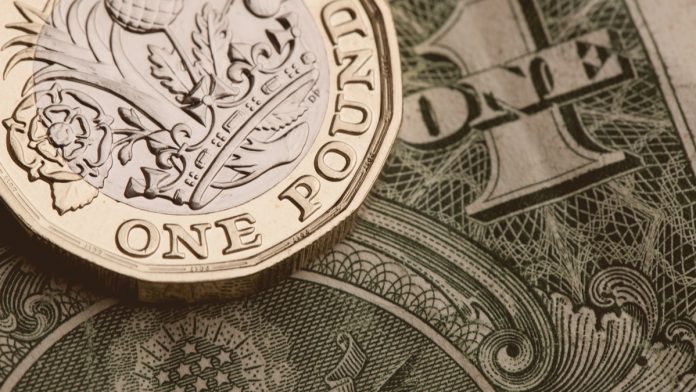After dropping 1.5% versus the dollar in the previous week, the pound was on the rise versus the dollar on Monday. The pound US dollar exchange rallied to a peak of US$1.2330 in early trade on Monday.
The pound advanced on Monday after data showed that the UK economy grew a little faster than originally thought over the pat year. New GDP figures from the Office of National Statistics (ONS) show that the economy expanded by 0.6% in January to March, this was an upward revision from the 0.5%. This lifted the annual GDP to 1.3%, up from the previous 1.2%. However, GDP still contracted by 0.2% in the second quarter (April — June) as analysts had predicted.
The volatility in the readings partly reflects Brexit timings, with stockpiling boosting the first three months of the year. Whilst stockpiling is not a sustainable form of growth, pound investors are still willing to look through that and cheer the stronger than forecast figures.
| Why does strong economic data boost a country’s currency? |
| Solid economic indicators point to a strong economy. Strong economies have strong currencies because institutions look to invest in countries where growth prospects are high. These institutions require local currency to invest in the country, thus increasing demand and pushing up the money’s worth. So, when a country or region has good economic news, the value of the currency tends to rise. |
Domestic politics and Brexit will now return to the forefront of investors’ minds. Comments by the Prime Minister over the weekend that he could try to bypass the “Benn Law” to take the UK out of Europe by the end of October will keep the prospect on a no deal Brexit alive and will therefore keep pressure on the pound.
| Why is a “soft” Brexit better for sterling than a “hard” Brexit? |
| A soft Brexit implies anything less than UK’s complete withdrawal from the EU. For example, it could mean the UK retains some form of membership to the European Union single market in exchange for some free movement of people, i.e. immigration. This is considered more positive than a “hard” Brexit, which is a full severance from the EU. The reason “soft” is considered more pound-friendly is because the economic impact would be lower. If there is less negative impact on the economy, foreign investors will continue to invest in the UK. As investment requires local currency, this increased demand for the pound then boosts its value. |
Dollar Supported Ahead Of A Busy Week
The dollar was well supported across the previous week. Whilst US data was OK it failed to impress dollar investors. Instead the greenback found support from market sentiment. When tensions rise, investors often look to buy into the dollar for its safe haven status.
There were two major themes that dollar investors were watching last week and that they will continue tracking this week; firstly, US House speaker Nancy Pelosi announced that there would be a formal impeachment investigation into President Trump.
Secondly, relations between the US and China. Tensions between the two powers appeared to have eased across the previous week. However, a report on Friday that the Trump administration may move to limit investment in China stoked concerns that little headway was being made between the two.
In addition to political and geopolitical factors, the US economic calendar is full this week with manufacturing and service sector figures, in addition to the US jobs report on Friday.
| What do these figures mean? |
| When measuring the value of a pair of currencies, one set equals 1 unit and the other shows the current equivalent. As the market moves, the amount will vary from minute to minute.
For example, it could be written: 1 GBP = 1.28934 USD Here, £1 is equivalent to approximately $1.29. This specifically measures the pound’s worth against the dollar. If the US dollar amount increases in this pairing, it’s positive for the pound. Or, if you were looking at it the other way around: 1 USD = 0.77786 GBP In this example, $1 is equivalent to approximately £0.78. This measures the US dollar’s worth versus the British pound. If the sterling number gets larger, it’s good news for the dollar. |
This publication is provided as general information only and is not intended as an exhaustive treatment of its subject. TransferWise Inc. and its affiliates (“we” or “us”) expressly disclaim any contractual or fiduciary relationship with you on the basis of the content of this publication, and you may not rely thereon for any purpose. You should consult with qualified professionals or specialists before taking, or refraining from, any action on the basis of the content in this publication. The information in this publication does not constitute legal, tax, investment or other professional advice from us. We make no representations, warranties or guarantees, whether express or implied, that the content in the publication is accurate, complete or up to date, and DISCLAIM ANY IMPLIED WARRANTIES OF MERCHANTABILITY OR FITNESS FOR A PARTICULAR PURPOSE





